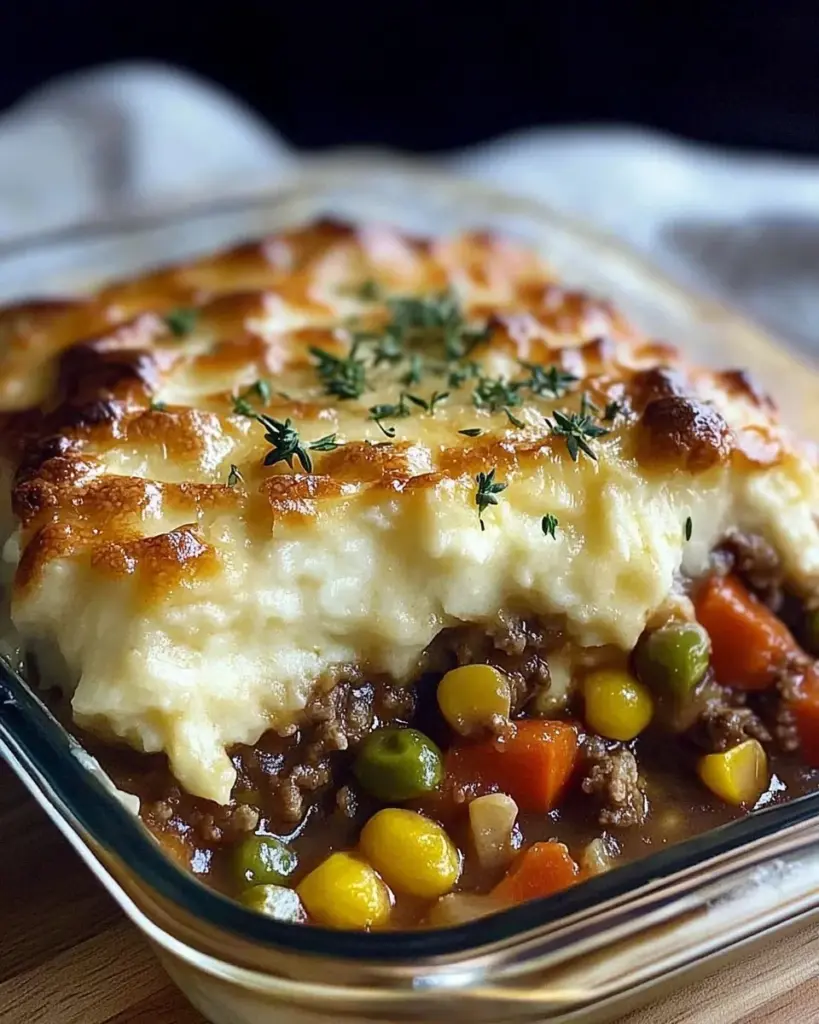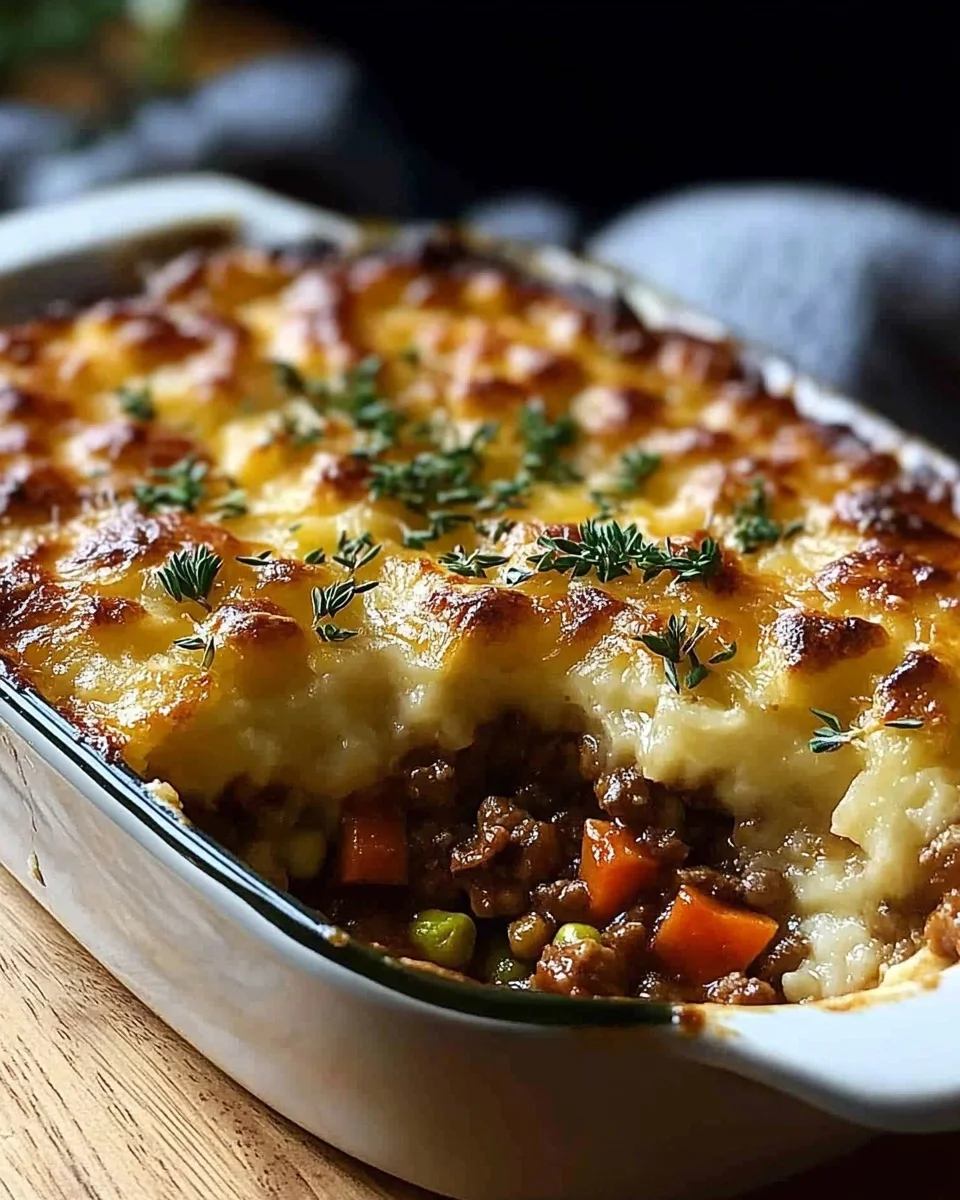There’s a certain magic in the air when the aroma of a hearty Shepherd’s Pie fills the kitchen. For me, this dish is more than just a meal; it’s a cherished memory from my childhood. I recall cold evenings when my family would gather around the dinner table, eagerly awaiting the moment when my mother would present her signature Shepherd’s Pie. The rich, savory filling topped with creamy mashed potatoes was the ultimate comfort food that brought warmth to our home and hearts.
As I grew older and embraced the convenience of modern kitchen appliances, I sought to recreate this beloved dish with a contemporary twist. Enter the Thermomix—a versatile kitchen companion that streamlines the cooking process without compromising on flavor. This recipe combines the traditional essence of Shepherd’s Pie with the efficiency of the Thermomix, making it accessible for both seasoned cooks and kitchen novices.
The Evolution of Shepherd’s Pie
Shepherd’s Pie has humble beginnings rooted in the United Kingdom and Ireland. In the 18th century, resourceful shepherds crafted this dish to repurpose leftover roasted meat, typically lamb or mutton. The name “Shepherd’s Pie” reflects its origins, as shepherds were closely associated with these meats. The introduction of mashed potatoes as a topping came later, coinciding with the widespread cultivation of potatoes in Europe. This addition not only enhanced the dish’s heartiness but also provided an economical way to create a satisfying meal.
Over the centuries, Shepherd’s Pie has undergone various transformations. While lamb remains the traditional choice, variations featuring beef—known as Cottage Pie—have become equally popular. Modern adaptations often incorporate a diverse array of vegetables and seasonings, catering to contemporary palates while preserving the dish’s comforting essence.
Why Choose the Thermomix for Shepherd’s Pie?
The Thermomix revolutionizes the preparation of Shepherd’s Pie by consolidating multiple cooking steps into one appliance. Here’s how it enhances the process:
- Efficient Sautéing and Steaming: The Thermomix allows for precise temperature control, ensuring that ingredients are sautéed and steamed to perfection.
- Consistent Mixing: Its powerful mixing capabilities guarantee a uniform blend of flavors and textures in both the filling and the mashed potato topping.
- Time-Saving: By handling multiple tasks simultaneously, the Thermomix reduces overall cooking time, making it ideal for busy individuals and families.
Festive Vanilla Bean Shamrock Cookies
Ingredients:
- 2 and 1/4 cups all-purpose flour
- 1/2 teaspoon baking powder
- 1/4 teaspoon salt
- 3/4 cup unsalted butter, softened
- 3/4 cup granulated sugar
- 1 large egg, at room temperature
- Seeds scraped from 1 vanilla bean
- 1 teaspoon pure vanilla extract
Directions:
- Prepare the Dough: In a medium bowl, whisk together the flour, baking powder, and salt. In a separate large bowl, beat the softened butter and granulated sugar together until creamy and smooth. Add the egg, vanilla bean seeds, and vanilla extract, beating until combined. Gradually add the dry ingredients to the wet ingredients, mixing until the dough comes together.
- Chill the Dough: Divide the dough into two equal parts, flatten each into a disc, wrap tightly in plastic wrap, and refrigerate for at least 1-2 hours.
- Roll and Cut: Preheat the oven to 350°F (177°C). Line baking sheets with parchment paper. On a lightly floured surface, roll out one disc of dough to about 1/4-inch thickness. Use shamrock-shaped cookie cutters to cut out cookies and place them on the prepared baking sheets.
- Bake: Bake for 10-12 minutes, or until the edges are lightly browned. Allow cookies to cool on the baking sheets for 5 minutes before transferring to a wire rack to cool completely.
- Optional Decoration: Once cooled, decorate the cookies with vanilla bean buttercream and sprinkles as desired.
Nutrition Information (per cookie):
- Calories: 150
- Fat: 7g
- Saturated Fat: 4g
- Cholesterol: 30mg
- Sodium: 40mg
- Carbohydrates: 19g
- Sugar: 9g
- Protein: 2g
Note: Nutritional values are approximate and may vary based on specific ingredients used and portion sizes.

This approach not only simplifies the cooking process but also maintains the rich, layered flavors that are the hallmark of a classic Shepherd’s Pie.
Crafting the Perfect Shepherd’s Pie with Thermomix
Achieving a delectable Shepherd’s Pie involves attention to detail and quality ingredients. Here’s a guide to mastering this dish:
1. Selecting Quality Ingredients
- Meat: Opt for fresh, high-quality minced lamb to capture the authentic flavor. If preferred, beef can be used for a traditional Cottage Pie variation.
- Vegetables: Incorporate a medley of finely diced onions, carrots, celery, and peas. These not only add nutritional value but also enhance the dish’s texture and taste.
- Potatoes: Choose starchy varieties like Russet or Yukon Gold for a creamy, fluffy mashed potato topping.
2. Layering Flavors
- Aromatic Base: Sauté garlic and onions to build a flavorful foundation.
- Herb Infusion: Utilize a blend of herbs such as thyme, rosemary, and parsley to impart depth to the filling.
- Richness: Incorporate tomato paste and Worcestershire sauce to enhance the savory profile of the meat mixture.
3. Achieving the Ideal Consistency
- Thickening the Filling: Use a small amount of cornflour to achieve a hearty, cohesive filling that holds together well.
- Creamy Mash: Add cream and a touch of butter to the mashed potatoes, seasoning generously with salt and pepper for a luscious, flavorful topping.
Common Questions About Shepherd’s Pie
1. What distinguishes Shepherd’s Pie from Cottage Pie?
The primary difference lies in the meat used: Shepherd’s Pie features lamb, while Cottage Pie is made with beef. Both dishes consist of a savory meat filling topped with mashed potatoes.
2. Can I substitute the potato topping with another vegetable?
Absolutely. Alternatives like sweet potatoes or cauliflower mash can be used to cater to dietary preferences or to introduce different flavors.
3. Is it advisable to prepare the filling ahead of time?
Yes, preparing the filling in advance allows the flavors to meld. Ensure it’s cooled before adding the mashed potato topping to maintain distinct layers.
4. How can I prevent the pie from bubbling over during baking?
To avoid overflow, ensure the filling is adequately thickened and leave a small gap around the edges when applying the mashed potato topping to allow steam to escape.
5. What are some variations of the traditional Shepherd’s Pie?
Variations include incorporating different vegetables, using alternative meats like turkey or chicken, or adding cheese to the mashed potato topping for extra richness.
Advertisement
6. How should leftovers be stored and reheated?
Store leftovers in an airtight container in the refrigerator for up to three days. Reheat in the oven at 160°C until warmed through to maintain the dish’s texture.
Conclusion: A Timeless Dish Made Effortless
The fusion of traditional recipes with modern appliances like the Thermomix exemplifies how culinary practices evolve while honoring their roots. This Shepherd’s Pie with Thermomix offers a seamless blend of rich history and contemporary convenience, allowing you to enjoy a hearty, flavorful meal with minimal effort. Whether you’re revisiting cherished family traditions or creating new ones, this dish is sure to bring warmth and satisfaction to your table.


